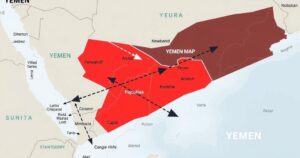Severe Earthquake in Caribbean Triggers Tsunami Advisory and Safety Measures

A 7.6 magnitude earthquake struck the Caribbean Sea, triggering a tsunami advisory for Puerto Rico and the Virgin Islands. Although the advisory was lifted, unusual currents may persist. Authorities urged caution, especially in Cuba, where potential tsunami waves were forecasted. The earthquake was attributed to tectonic movements between the North American and Caribbean plates, with no immediate damage reported.
A significant earthquake measuring 7.6 in magnitude struck the Caribbean Sea on Saturday evening, as reported by the U.S. Geological Survey (USGS). The quake occurred approximately 130 miles southwest of Georgetown, Cayman Islands, just before 6:30 p.m. local time. In the wake of the seismic activity, a tsunami advisory was issued for Puerto Rico and the Virgin Islands, prompting officials to warn residents to avoid beaches and coastal regions due to potential flooding and hazardous sea conditions.
By 8:15 p.m., the U.S. National Tsunami Warning Center (NTWC) lifted the tsunami advisory for both areas. Nonetheless, they cautioned that unusual currents might persist. The NTWC advised cautious behavior near water. NOAA indicated the possibility of tsunami waves reaching between 1 and 3 meters along specific coasts of Cuba, urging residents to remain vigilant as actual wave heights could vary due to local conditions.
In Cuba, authorities encouraged citizens to vacate beachfront areas as a precaution. The NOAA further clarified that tsunami characteristics differ from typical tidal waves, stating that a tsunami is considerably more powerful. There was no tsunami warning for the mainland United States, according to the NTWC. The USGS attributed the earthquake to strike-slip faulting in the shallow Earth crust along the boundary between the North American and Caribbean tectonic plates.
No immediate damage from the earthquake was reported, and further monitoring of the situation is ongoing. The USGS provided detailed information regarding the earthquake’s mechanism, noting that the rupture occurred along a steeply dipping fault. While the tsunami threat subsided, communities remain advised to exercise caution around bodies of water.
Earthquakes in the Caribbean are not uncommon due to the tectonic activities along the North American and Caribbean plates’ boundary. The region’s geological makeup often leads to significant seismic events and potential tsunamis. Authorities, including the USGS and NOAA, monitor these events closely to issue timely warnings and advisories, protecting communities from possible dangers. Understanding the nature of tsunamis is crucial, as they differ fundamentally from regular waves, being far more destructive in effect and management.
In conclusion, the notable earthquake in the Caribbean Sea prompted swift actions by authorities in response to tsunami concerns. While the immediate threat subsided, the public was advised to remain careful near water due to continuing currents. This incident underscores the importance of preparedness and clear communication in the event of natural disasters. The geophysical dynamics of the region necessitate ongoing vigilance and response readiness.
Original Source: abc7amarillo.com








